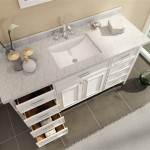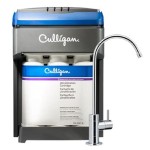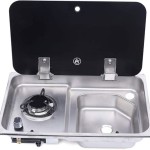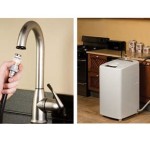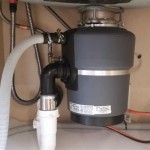Heavy Duty Double Utility Sink: A Comprehensive Overview
The heavy-duty double utility sink is a foundational component in various settings, ranging from commercial kitchens and industrial workshops to residential garages and laundry rooms. Its robust construction, coupled with the convenience of two separate basins, provides a versatile solution for cleaning, washing, and a wide array of other tasks. This article provides a comprehensive overview of heavy-duty double utility sinks, exploring their construction, materials, applications, and key considerations when selecting the appropriate model.
The primary function of a double utility sink is to offer a dedicated space for tasks that require water and a sink basin but are not suitable for use in a kitchen or bathroom sink. This includes cleaning dirty equipment, washing paintbrushes, rinsing muddy boots, and other similar activities that could potentially damage more delicate fixtures or introduce contaminants into areas where food preparation or personal hygiene take place. The "heavy-duty" designation implies a level of durability and resistance to wear and tear beyond that of standard residential sinks. This enhanced durability is achieved through the use of more robust materials and construction techniques.
Understanding Construction Materials
The material used in the construction of a heavy-duty double utility sink significantly impacts its durability, resistance to chemicals, and overall lifespan. Several materials are commonly employed, each offering specific advantages and disadvantages.
Stainless Steel: Stainless steel is a popular choice for heavy-duty utility sinks, particularly in commercial environments. Its inherent resistance to corrosion, staining, and heat makes it ideal for handling a wide range of substances. Stainless steel is also relatively easy to clean and maintain, contributing to its longevity and hygiene. Different grades of stainless steel exist, with higher grades (e.g., 304 stainless steel) offering superior corrosion resistance and durability. Sink gauge, which refers to the thickness of the stainless steel, is another critical factor. A lower gauge number indicates a thicker, more robust material. Heavy-duty sinks typically use thicker gauges to withstand heavy use and potential impacts.
Polypropylene: Polypropylene is a type of plastic known for its chemical resistance, impact resistance, and lightweight properties. Utility sinks made from polypropylene are often favored in environments where harsh chemicals are frequently used, as they are less susceptible to corrosion than some metals. Polypropylene sinks are also relatively inexpensive, making them a cost-effective option for certain applications. However, polypropylene may not be as resistant to high temperatures or heavy loads as stainless steel.
Cast Iron: Cast iron sinks offer excellent durability and resistance to impact. They are often coated with enamel to provide a smooth, non-porous surface that is easy to clean and resistant to staining. Cast iron sinks are heavier than stainless steel or polypropylene sinks, which can make installation more challenging. While cast iron is durable, the enamel coating can chip or crack over time, exposing the underlying iron to rust. Maintenance and care are essential to preserve the integrity of the enamel coating.
Fiberglass: Some utility sinks are constructed from fiberglass-reinforced plastic. Fiberglass offers a combination of strength, lightweight properties, and resistance to corrosion. These sinks are often found in industrial settings where portability is a concern. However, fiberglass may not be as resistant to scratches or impacts as stainless steel or cast iron.
Key Applications of Double Utility Sinks
The versatility of heavy-duty double utility sinks makes them suitable for a diverse range of applications. Their ability to handle demanding tasks and resist harsh conditions makes them indispensable in various industries and settings.
Commercial Kitchens: In commercial kitchens, double utility sinks are used for a variety of tasks, including washing pots and pans, rinsing vegetables, and cleaning utensils. The two basins allow for simultaneous washing and rinsing, increasing efficiency. Stainless steel sinks are the most common choice due to their durability, hygiene, and resistance to food-borne contaminants.
Industrial Workshops: Industrial workshops often require a dedicated space for cleaning machinery parts, tools, and equipment. Double utility sinks provide a convenient solution for these tasks. The ability to handle solvents, oils, and other industrial chemicals is crucial in this setting. Polypropylene or stainless steel sinks are frequently used due to their chemical resistance and durability.
Laundry Rooms: In residential or commercial laundry rooms, double utility sinks can be used for pre-treating stains, hand-washing delicate items, and soaking heavily soiled clothes. The separate basins allow for sorting and washing different types of fabrics or garments simultaneously. Polypropylene or stainless steel sinks are suitable for laundry room applications.
Garages and Home Improvement: Homeowners often install double utility sinks in garages or workshops for cleaning paintbrushes, rinsing tools, and washing hands after completing projects. The sink provides a dedicated space for messy tasks that would otherwise soil kitchen or bathroom sinks. Polypropylene or stainless steel sinks are commonly used in this setting.
Veterinary Clinics and Animal Care Facilities: These facilities require sinks that can withstand frequent cleaning and disinfection while also handling animal waste and other potentially hazardous materials. Stainless steel sinks are preferred due to their hygiene, durability, and resistance to corrosion.
Factors to Consider When Selecting a Heavy Duty Double Utility Sink
Choosing the right heavy-duty double utility sink requires careful consideration of several factors. These factors include the intended application, the available space, the required durability, and the budget.
Sink Size and Dimensions: The size of the sink should be appropriate for the available space and the types of tasks that will be performed. Consider the depth and width of the basins, as well as the overall height of the sink. Ensure that the sink is large enough to accommodate the items being washed or cleaned without being too bulky or obstructing the surrounding area. Also consider the mounting type, whether it is floor mounted or wall mounted, as that will affect the dimensions that you can work with.
Material and Gauge: Select a material that is appropriate for the intended application and the types of substances that will be handled. Consider the gauge of the material, with thicker gauges offering greater durability. For applications involving harsh chemicals or heavy use, stainless steel with a low gauge number is recommended. For applications where chemical resistance is paramount and heavy loads are less of a concern, polypropylene may be a suitable option.
Drainage and Plumbing: Ensure that the sink has adequate drainage and that the plumbing connections are compatible with the existing plumbing system. Consider the size and type of drain openings, as well as the location of the drain pipes. Ensure proper connections and avoid the addition of undue stress on pipes that can cause cracking or leaks. A good seal with plumbers putty, if needed, can alleviate many issues around the drain.
Accessories and Features: Consider any additional accessories or features that may be required, such as faucets, sprayers, drainboards, or storage shelves. These accessories can enhance the functionality and convenience of the sink. Drainboards provide a convenient space for drying items, while storage shelves can be used to store cleaning supplies or tools. Faucets with adjustable sprayers can be particularly useful for rinsing items or cleaning hard-to-reach areas.
Installation and Maintenance: Consider the ease of installation and the required maintenance. Some sinks are easier to install than others, particularly if they are lightweight or come with pre-drilled mounting holes. Regular cleaning and maintenance are essential to prolong the life of the sink and prevent the buildup of dirt, grime, or stains. Follow the manufacturer's recommendations for cleaning and maintenance.
Cost and Budget: Establish a budget and compare prices from different suppliers. While it may be tempting to opt for the cheapest option, it is important to consider the long-term cost of ownership. A higher-quality sink may cost more initially, but it may last longer and require less maintenance, ultimately saving money in the long run. Factor in the cost of installation, accessories, and ongoing maintenance when making a purchasing decision.
Ultimately, the selection of a heavy-duty double utility sink requires careful consideration of the specific requirements of the application and the available resources. By considering these factors and comparing different options, it is possible to choose a sink that provides reliable performance, durability, and convenience for years to come.
The functionality of a heavy duty double utility sink can also be expanded with the addition of different parts, especially for commercial use. Some manufacturers offer accessories like pre-rinse faucets, add-on spray nozzles, and even disposals that fit onto or near the utility sink. This would allow for even more use for washing dirty dishes, scrubbing hard to reach spots, and disposing of food products and cleaning up to be even easier and faster.
Proper care and maintenance are crucial for extending the lifespan of a heavy-duty double utility sink. Routine cleaning with appropriate cleaning agents, based on the material of the sink, is paramount. Regular inspection of drains and plumbing connections can prevent costly leaks and damage. Addressing minor issues promptly, such as small chips or scratches, can prevent them from escalating into more significant problems. In the case of stainless steel, preventative measures like avoiding prolonged exposure to chloride-containing substances can mitigate corrosion.

Mustee 24c Utilatwin Double Laundry Tub Combo White

Freestanding Laundry Utility Sinks Made In The Usa

Mustee 46 In X 34 Plastic Laundry Tub 24c The Home

Double Bowl Stainless Steel Utility Sink Heavy Duty Workstation With Hot Cold Faucet 30 33 47

Bigtub Utilatub 36 Gallon Floor Mount Combo Utility Tub 34 X 40 24 In White

Heavy Duty Stainless Steel 304 Kitchen Utility Sink Two 2 Compartment

33 Inch Double Bowl Fireclay Farmhouse Sink White

Stainless Steel Kitchen Utility Sink With 2 Compartment Backsplash Us

Trinity Thapbk 0323 Stainless Steel Freestanding Single Bowl Utility Sink For Garage Laundry Room And Use Includes Pull Out Faucet Nsf

H D 14 Ga Multi Station Wash Up Sink 72 130s72208b Stainless Steel Sinks
